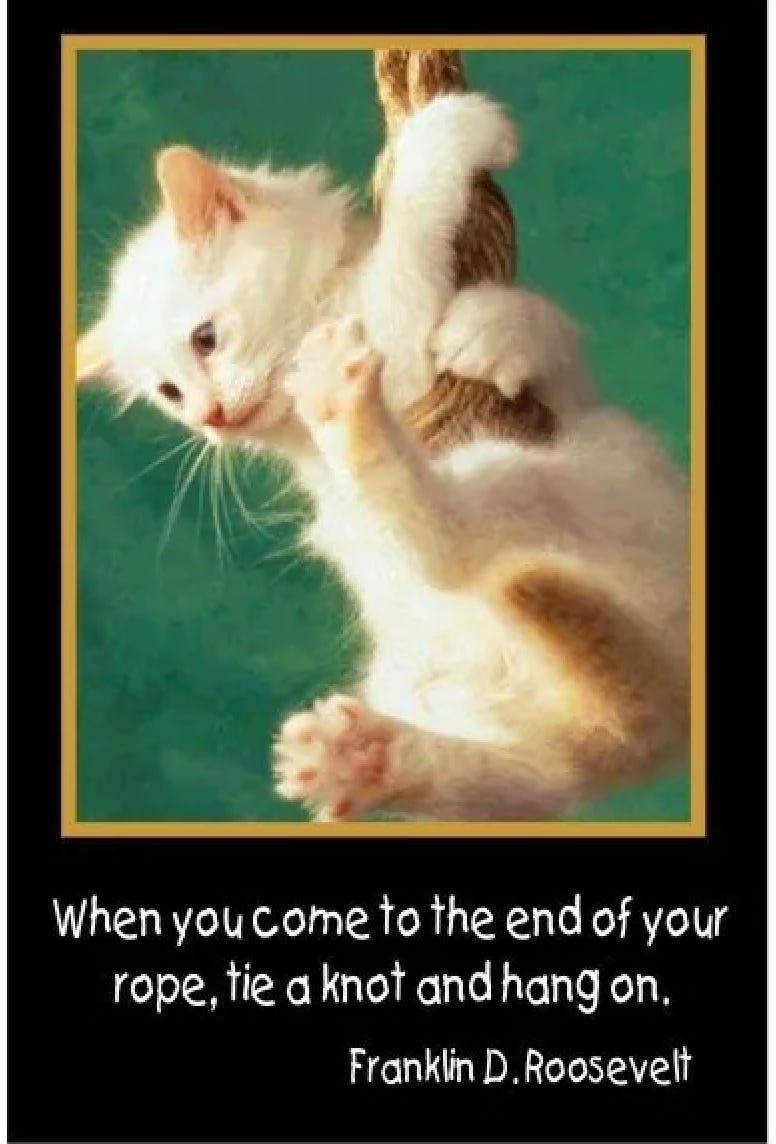There is a baby grand piano, of all things, at the gate. I am balancing my cafe au lait on my leg and passing out breakfast pastries to all the hungry people in my care when I hear—through the hoards of people in duty-free, through the glass gateways holding back all of us who are hurrying up to wait, around the corner and way down at the end of the terminal—Scott Joplin’s “Maple Leaf Rag” rise above the noise.1
As a professional musician, you’d think the sight of a beautiful instrument, free for anyone to sit down and play, would be a joyful one, a welcoming, exciting, delightful invitation to create in the cracks. I’m ashamed to say that, in truth, when I see pianos in public with a sign that says, “PLAY ME,” my first reaction is dread. Many of my coaching clients and musician friends say the same. As the designated “music person” (even though I’m an oboist and not a pianist, mind you), I fear that my friends and fellow travelers will look at me and say, “Play something!”
What do I even have memorized?
Is it flashy or beautiful or good enough?
What if people start making requests?
I usually crawl into myself, perhaps politely decline, and then feel bad about it later.
But this time, as my children started dancing wildly to ragtime, making crumbs fly everywhere, I let the music wash over me. It is a young college student playing. I study him. His eyes are focused but bright. I tap my foot, too. I accept the new lightness in the somber air, the syncopated lilt of this unapologetically joyful music that falls over us like the powdered sugar on my children’s abandoned croissants.
“Thanks for playing,” I tell him when we pass each other in line a few moments later.
“You’re welcome,” he says glowingly, “Happy New Year.”
Later on the plane, I chat with my husband about how much joy the piano brought me.
He listens, smiling in that knowing way of his, and then asks me, “What is God teaching you?”
Each January/December I pick a word for the year ahead, to guide and inspire me toward the growth I hope to see in myself. This year, several options tumble around in my brain like clothes in a drier, but I can’t seem to find the words I want to live by. I have many intentions (I don’t dare call them resolutions), but I am attempting these slowly and loosely, with expectations set to “January in Michigan” temperature settings: lower than low.
As someone who writes about personal development and who historically loves to plan and dream of the future, I’m surprised at the murkiness I feel around my word of the year this go-round. I’m intrigued by my disinterest in thinking beyond this week.
I know from reading about such things that hyperfocusing on the present can be a trauma response. Maybe that’s too strong a word for my situation—there is no “capital T Trauma” that is affecting me right now—but I am horrified daily by all the suffering around me. Yesterday, I drove by what I now know was a doubly fatal car accident. A close friend of mine is going through a messy relationship breakdown. People I know have lost everything in the wildfires in California. Loss, loss, loss.
I have arrived here in 2025, grateful to be alive and safe, yet considering a long-term hibernation until there’s more daylight and the news is marginally better. A word of the year feels like a sledgehammer when the tool I need is a pillow.
This wouldn’t be such a problem if I weren’t staring down a book deadline—a project that is so important to me, not only because multiple people expect me to finish by June 1st, but because it is a topic that I love and a book I feel I was born to write. Recently, I become a petty, whiny child every time I try to push the “discipline button” and open the document. Then I feel bad for feeling bad, like, I’m not grateful enough for this chance to do this; why don’t I buck up and get over myself and write?! I need a word of the year to help me arrive at my writing desk ready to come up with something decent, not depressing or derivative.
I need a word of the year that feels gentle enough to meet me in this fragile, foggy, freezing moment and strong enough to shake me from this slumber into action and, if not thrust into creative flow, provide at least a slow drip of some kind of motivation.
What word is that? Please share if you know.
Over Christmas break, we traveled to Europe for the first time as a family of four, well five, if you count my mother-in-law, who came too, thank God! It was an unforgettable adventure, galavanting with 26 roller bags, 15 pounds of snacks, and one monstrosity of a double stroller through France and Spain with two children under seven. (The adults outnumbered the kids at least!) While there were small meltdowns and one (kinda major) potty accident in a fine dining establishment in Barcelona, and while I did come home needing acupuncture from the teeth grinding, overall it was a lovely trip.
This week, back at home, both kids mercifully at school for the first time in three weeks, my husband and I were reflecting on the trip and, in particular, how much we learned about our children—their rhythms, their hilarious facial expressions (mostly Eli), and their uniquely weird and wonderful way of moving through the world. By the light of the Eiffel Tower, by the rainbow rays of stained glass in La Sagrada Familia, my little family looked different to me all of a sudden.
I’m struck by how being in close proximity to each other without interruption or break—the quantity time, which we don’t always get when we are home—impacted our intimacy and deepened our connection so quickly. All the parenting books tell you how important quality time is over quantity—limit screen time and make the most of the evenings after school because, with work and life, those brief hours and 18 summers are all you get. I don’t disagree that we should make the most of that time, but I don’t like the scarcity mindset behind that reasoning at all. Mama needs a break sometimes! But as exhausting and stressful as having my kids within arm’s reach for three weeks straight was, I can see how the sheer quantity of shared experience creates deep connection and lasting memories.
Just being together, even in the generally low-quality moments—like transatlantic flights where we all sat in front of screens for hours—this time has shifted something in me. With the inside jokes and new rituals, my deepening skill of anticipating needs, I felt myself grow as a mother; I felt myself loving them more and better.
One new thing we learned was how to stay together in a crowd. When we are without the stroller, when we are walking in a congested airport or a busy parking lot, Eli loves to hold my hand, but Eva, my almost 7-year-old, not so much. I can’t bring myself to get those backpacks with leashes for kids, yet I’m terrified of us getting separated. Eva and I compromise. “Hold on to my sweater!” I yell in the crowded airport train in Paris, and as we push through the masses of travelers and roller bags, I can feel the gentle pull of her little hand against my back. I know she’s with me. This is just one routine, one small, familiar intimacy that we developed over the last three weeks. But it’s stuck with me the way trivial things do when they have something to teach me.
We are carrying so much into the new year: grief mixed with cautious optimism, big and small fears for our and other people’s children, climate change, confused and angry prayers. We hold onto hope like a child at their mother’s back, battered by the onslaught of hardship and suffering. We hold on, and when we finally break through the thick crowd of overthinking and bone-deep exhaustion, we find that somehow, against all odds, we have not let go.
And now, it occurs to me. This is how I will write my book. I’ll hold on to the hem of its garment and keep walking. I’ll grab on to the thread of that idea that I have carried with me all my life, a gift that I believe didn’t come from me, and as I walk this weary January road, I will practice the daily art of not letting go.
For me, that looks like showing up to write even when I don’t know what to say. It means choosing to trust that there is wisdom and love guiding me if I am willing to keep going. Hanging on to the thread becomes a filter I run every decision through. As I choose what music or audiobook to reach for on my commute, I’ll ask, will this help me hang on, will it deepen my connection to this dream, this calling, or not? I will hone my inner knowing; I will bring new attention to my mind and my body; I will practice, even when it is hard, not running from what keeps me within the world of what I want to express.
And so I offer it to you, a phrase of the year, appearing here halfway through January but right on time, from one weary wanderer to another: hang on to the thread.

Franklin D. Roosevelt said, “When you come to the end of your rope, tie a knot and hang on.” I can see a ‘90s motivational poster with a small yellow kitten clinging to a knotted cord in my mind’s eye. I don’t know about you, but more this year than others, I feel remarkably like that scaredy cat from that photo, hanging on by a thread.
But what if we could recast this “hanging on” mantra into something more empowering? Maybe the piano in the terminal is teaching me that there are many threads, many ropes, to tie a knot in and grab onto with all my might. Teaching me that art and inspiration are everywhere, and while it can feel like the world—the pace and unpredictability of our lives—is dead-set on separating us from the creative flow, from the ah-ha moments, from joy, it’s still there, waiting just out of sight.
When we feel like we use all our energy to keep pushing against the crowd, holding back the weight of despair that threatens to trample us, when we are tempted to let the cynicism or the busyness pry loose our grip and make us let go, what if hanging on by a thread is not a call for help but a way home, a way through?
Maybe you aren’t ready or able to hold hands with creative joy, with that dream you are chasing, that thing you long to make, but could you grab the back of its sweater? Do you trust yourself and God enough to lead you? Will you foster that connection through quantity time, the rugged and imperfect and sacred practice of showing up, weary and wanting? When you find yourself awake at 2 a.m. due to jetlag or when you’re too tired/busy/sad/anxious to create, will you do what you can to care for yourself, to provide that endless supply of snacks travelers seem to need, and not disown your own inner knowing for some guru or mentor?
Will you join me in hanging on for dear life to the thread of who you feel called to become?
What if creativity and making things we care about, from a meal to a manuscript, what if it is less about being brilliant and coming up with a way forward and more about a dogged, stubborn, persistent, sweaty-palmed hanging on?
If I have learned anything from my magical (read: exhausting) trip this winter with my family, it’s that being together, yes, in the grand castles and awe-inspiring cathedrals, but also in disgusting airport bathrooms and ice-laden sidewalks, dancing together with equal abandon under shimmering landmarks and fluorescent lights of a depressing terminal—it is hanging onto one another, hanging onto joy, the way we choose each day not to let go, that is how we keep going, that is how we find our way.
Construction of The Basílica de la Sagrada Família (The Church of the Holy Family) began in Barcelona under the direction of architect Francisco de Paula del Villar in March 1882. Villar resigned the next year, and the young Antoni Gaudí assumed responsibility for its design. Gaudí took the project in a different (I think, better) direction.
What is so exceptional about this structure to me, a lover of all things modern, besides the church’s massive towers and exquisite stained glass, is the way it merges the gothic style with art nouveau, the old and the new slamming right into one another, forever altering the skyline of Barcelona. You come around the corner, and your eyes are drawn up; the otherworldly structure steals your breath. The giant cranes and teetering scaffolding are the only clues that this work of art remains unfinished.
Forty years into the project, in 1926, tragically, Gaudí was hit by a tram and died suddenly. The cathedral, which he had spent over half his life working on, was only about 15% complete. Spain broke into civil war, and construction was delayed. Many of the original models of La Sagrada Familia burned in fires. New architects were hired. Work continued off and on, delayed again and again in our day by both permit and pandemic. The estimated completion date is now 2026. That’s right: 100 years after the architect's death, 141 years after the first stone was laid. Next year, La Sagrada Familia will be done, and when it is complete, it will stand as the tallest church in the world.
As my neck began to hurt from staring up at the Passion Facade, an epoch of stone storytelling, I wanted to ask you: how will you hang on to the thread of your creative dreams this year when the inevitable interruptions arise? How will you build and rebuild, keep going, despite everything?
In that moment, I noticed one of the disciples on the stone structure looked a lot like the pictures of Gaudí from the museum, with his furrowed brow and square face. Later, I read some sources that say the sculptor who took over the design did this as a subtle homage to the man who dreamt up the building.
Remembering the cathedral now, back home in Michigan, I see Gaudí in it everywhere. At one point, he did build himself a home inside, moved into the temple workshop. Today, he is buried in the crypt down below the altar. Every stone and symbol of the place hums with his eccentric, devout, passionate, and joyful spirit. He reminds me that not only do we hang onto the threads of our creative callings, but by some miracle, our threads hang on to us.
Maybe you can’t inhabit your dreams just yet. Maybe we’ll never be the mastermind behind a UNESCO World Heritage Site. Maybe you aren’t even sure what is on the other end of that thread you’re hanging onto. Maybe all you can muster is sitting in the studio for five minutes a few times a week.
Here’s to seeing: that is not nothing.
Here’s to normalizing the long game, because, let’s be honest, even if Gaudí had lived longer, he would not have seen the cathedral finished in his lifetime.
Here’s to taking a cue from a fearless Catalan whose unwavering vision sings to me through time.
Here’s to letting yourself enjoy the pianos you find in your path, to no longer waiting for the products of our work to be finished before we celebrate, to no longer believing that it is all or nothing.
Here’s to holding on fiercely to the thread of our creative calling, letting it lead us to something greater than we can imagine—something that includes us but is much bigger, more resonant, more expansive than even we know.
As the missteps and u-turns threaten to steal our joy, as the wars rage and calamities fall like locusts, we will keep turning our attention back to the creative song and let that “still small voice” keep inching us forward into the unknown.
We will trust that at the other end of that rope is our Creator, the architect of history, who loves us, who rewards tenacious acts of desperate faith. Grabbing the hem of his garment, feeling hope’s gentle tug, means more than productivity or focus; it brings healing and wholeness.
Remember the last time you felt like writing? Remember when the poem bubbled up in you out of nowhere? The flicker of a spark of how to fix the painting or the way the music could go appearing like some distant unfinished tower in the imagined skyline of your psyche? Remember that feeling?
Now, tie a knot and hang on.











Love this one and the perspective of Gaudi’s vision-to-completion time frame. Thanks for the image of holding onto hope like a child at their mother’s back.
Love this! You encouraged me and inspired me today.